
Photo: Mark Mallory
Restoring a quiet environment for whales
Canada’s protected waters are home to many at-risk whales. Keeping waters as quiet as possible is key for their survival. This is where Parks Canada, in collaboration with partners, play an important role.
A world of sound
Sound is very important for toothed whales like Narwhals, Killer Whales, and Belugas. They use sound to navigate, hunt and communicate. The Beluga is known for its social skills and vocalizations, and is nicknamed the “canary of the sea.”
Listen to the St. Lawrence Estuary Belugas:
Text transcript
[ underwater sounds ] Belugas whistling. Sounds bounce off underwater cliffs and echo throughout the mouth of the Saguenay, creating an unearthly sound when Belugas vocalize. Audio clip provided by Fisheries and Oceans Canada Chair in underwater acoustics applied to marine mammals and their ecosystem (UQAR-ISMER)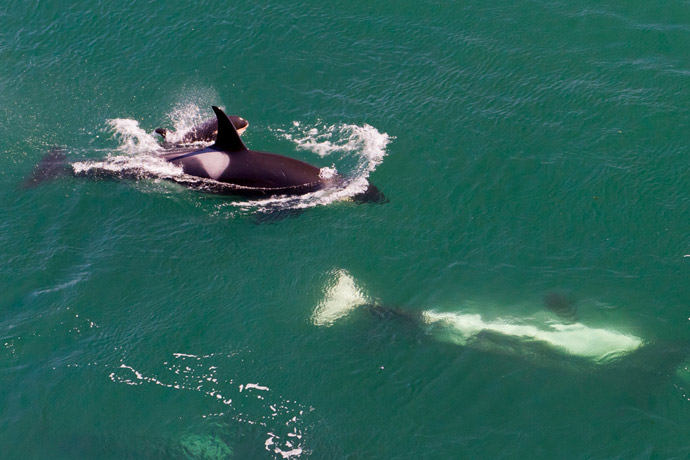

Noisy homes
Underwater noise can mask sounds that whales use to navigate, hunt, and to socialize. Southern Resident Killer Whales and St. Lawrence Estuary Beluga Whales live and travel in some of Canada's busiest and noisiest waters. Boat noise can lead to changes in animal behavior, risk of collision, hearing loss and, in some cases, serious injury or death.
The mouth of the Saguenay in Quebec is an important summer habitat for the St. Lawrence Estuary Beluga, an endangered species. They go here to feed, to meet a partner or extended family, or to go to a quiet place. It is also the busiest section of the Marine Park, where each year thousands of boats travel in the Beluga’s habitat.
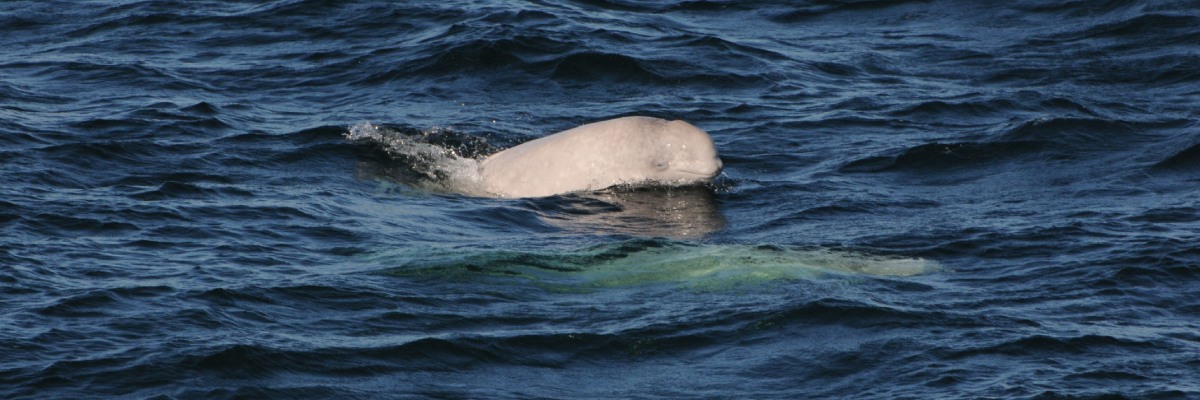
Parks Canada works with partners to restore a calmer environment for whales.
Listen to the St. Lawrence Estuary Belugas as a boat travels by:
Text transcript
[ underwater sounds ] The dull sound of a boat engine can be heard over top of Belugas whistling. The boat noise becomes very loud, eventually overpowering the sounds made by the Belugas. Audio clip provided by Fisheries and Oceans Canada Chair in underwater acoustics applied to marine mammals and their ecosystem (UQAR-ISMER)Whales speak up
Whales depend on protected areas as refuges from disturbances, like underwater noise. The presence of boats can interfere with the communication of whales. The St. Lawrence Estuary Belugas reduce the variety and amount of noises they make when boats are near. Their range of sound is also reduced. Loud underwater noise can mask calls between female Belugas and their calves. Areas that are important for whales need the most protection from noise disturbance.
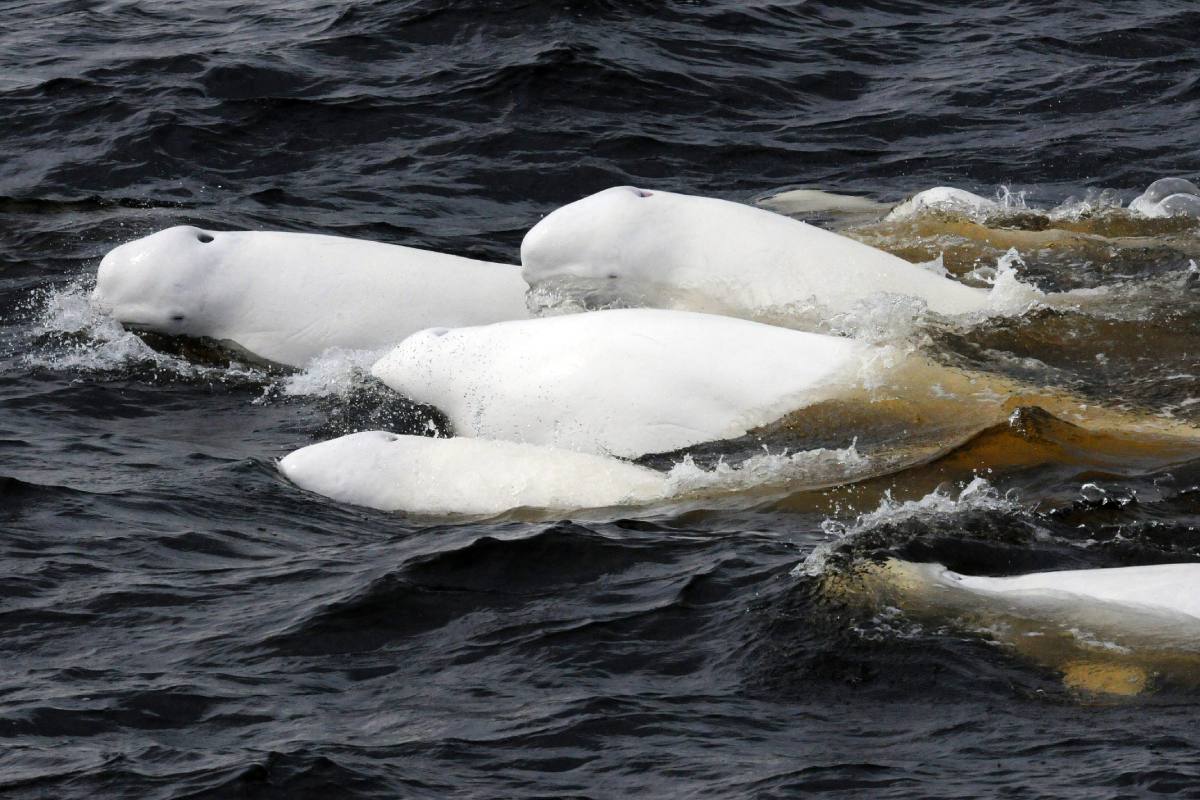
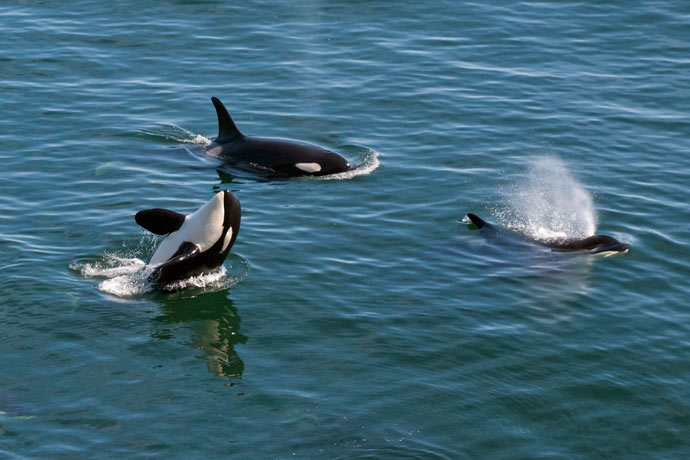
To protect species at risk, Parks Canada staff have implemented a peaceful zone at Saguenay–St. Lawrence Marine Park in Quebec. Area closures reduce disturbance, like noise, for St. Lawrence Belugas. By protecting habitats from underwater noise, we are helping endangered whales recover.
Watch how this area closure has benefited Belugas:
Transcript
Parks Canada Beaver Logo
A dark green illustrated map of Quebec shows an orange place marker over a light green shape of Saguenay–St. Lawrence Marine Park. The map zooms in to focus on Sainte-Marguerite Bay and the Saguenay River.
The date “2016” is indicated in the top left corner. A dense cluster of green lines and blue dots appear throughout the Saguenay River. An illustration of a St. Lawrence Beluga along with a label at the bottom indicates that this data represents “beluga and boat distribution pre-area closure”. The blue dots are clustered where Sainte-Marguerite Bay meets the Saguenay River. The green lines are spread widely throughout the Saguenay River. A legend in the top right corner reveals that each dot represents a “Beluga group sighting” and each green line represents a “boat passage”. An asterisk appears at the bottom with text that reads “Boat passages have been reduced to 10%. The data is showing that the boat passages are forcing Beluga groups to stay concentrated in a small area.
The date changes to 2018. A red outline appears where Saine-Marguerite Bay meets the Saguenay River. This is the same area where the beluga group sightings are concentrated. The red outline indicates an area closure that is off-limits to boat passages.
The date changes to 2022, four years after the area closure. Boat passages are now more concentrated at the side of the Saguenay River opposite to Sainte-Marguerite Bay. The blue dots representing Beluga group sightings are now more spread across the Saguenay River.
Protected waters
The endangered Southern Resident Killer Whales live seasonally in the protected waters off British Columbia. Some of these areas include the waters around Pacific Rim National Park Reserve and Gulf Islands National Park Reserve.
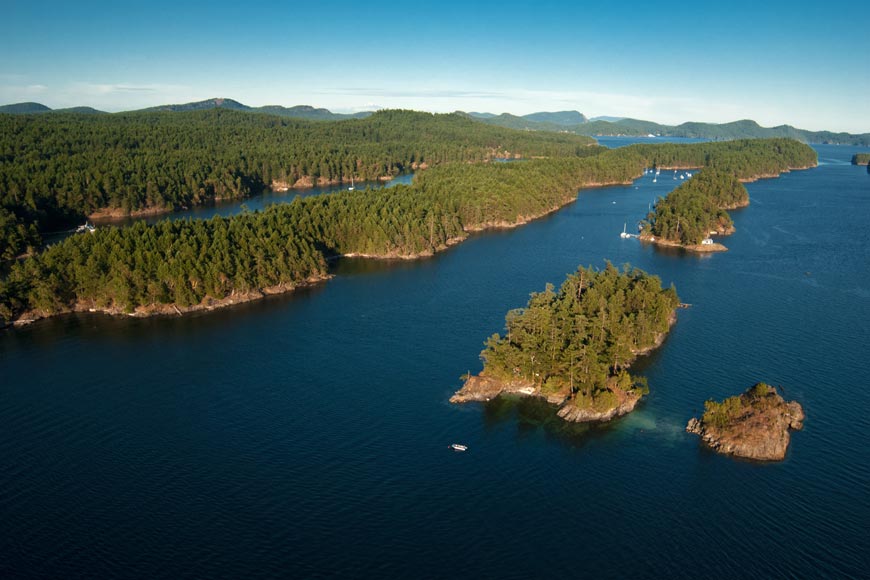
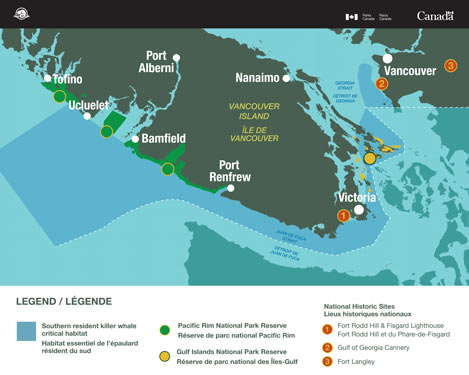
View larger map
Critical habitat area of the Southern Resident Killer Whales in Canadian waters around Pacific Rim and Gulf Islands National Park Reserves by Vancouver Island, British Columbia.
Map description
A map showing the marine boundaries of Pacific Rim National Park Reserve along parts of the south west coast of Vancouver Island, as well as Gulf Islands National Park Reserve along the southeastern coast of Vancouver Island. A second boundary shows the distribution of Southern Resident Killer Whales starting at Vancouver, extending down the eastern tip of Vancouver Island, wrapping westward around half the Island, and stretching out to the Pacific ocean.
The St. Lawrence Estuary Beluga Whales are local residents of Quebec. Over 75% of the Saguenay–St. Lawrence Marine Park is important Beluga habitat. The Marine Park and its surrounding areas are also important summertime habitats for other marine mammals.
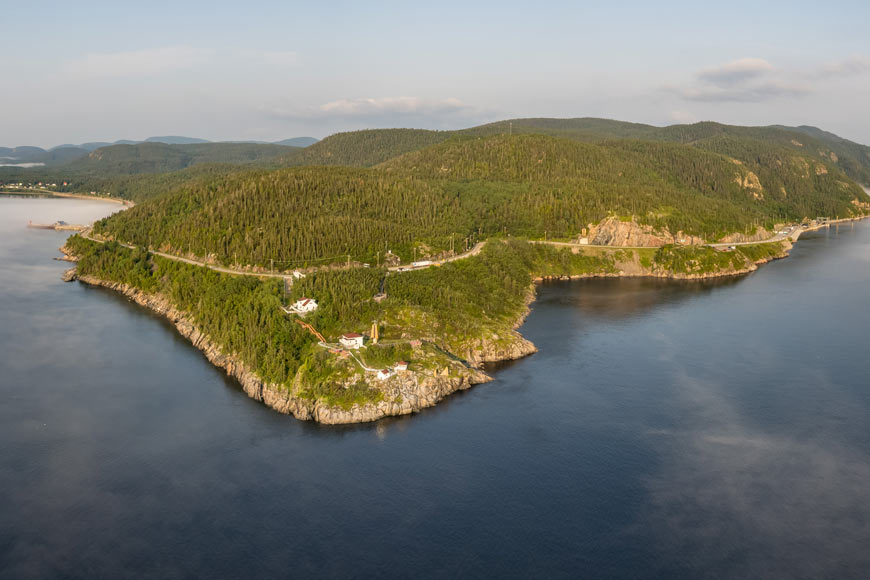

View larger map
A map showing the Saguenay–St. Lawrence Marine Park as well as the area of critical habitat for Beluga Whales in Quebec.
Map description
Map showing the limits of the Saguenay–St. Lawrence Marine Park and those of the beluga's critical habitat. The towns along the St. Lawrence River, from Baie-Saint-Paul to Escoumins and up to Bic (south shore), are shown as well as the islands and the Innu Essipit First Nation and the Wolastoqiyik Wahsipekuk First Nation.
Tallurutiup Imanga National Marine Conservation Area (NMCA) is an important seascape in Nunavut. The area is known around the world as a natural treasure, where Parks Canada is working with partners and stakeholders to better protect whales like the Bowhead, Narwhal, and Beluga.
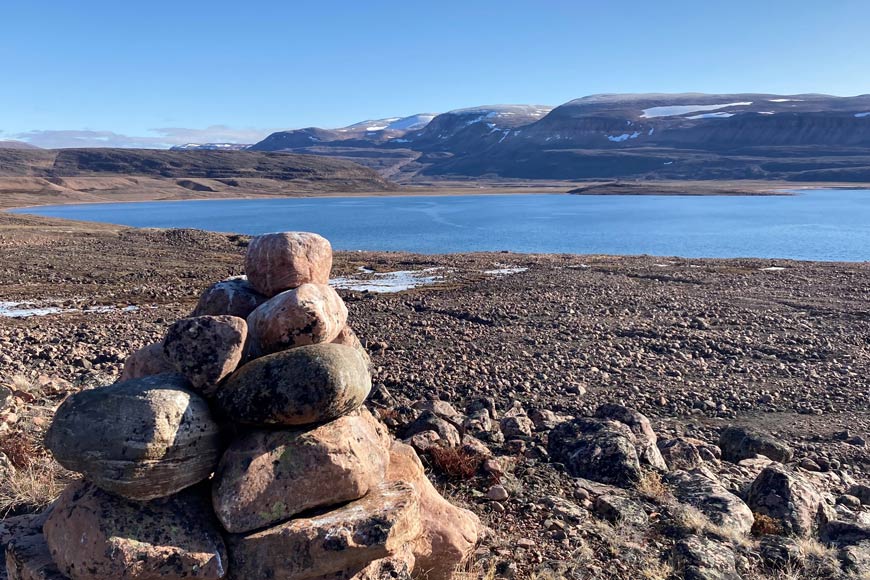
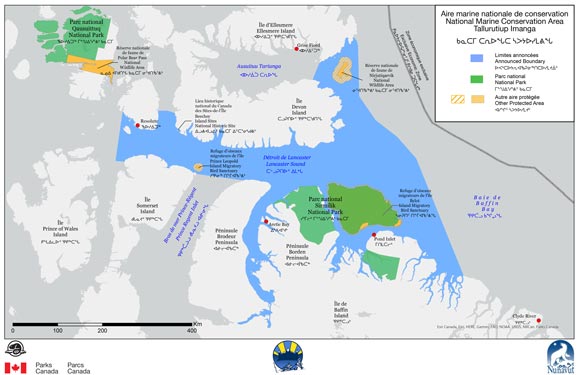
View larger map
The boundary of the Tallurutiup Imanga National Marine Conservation Area in Nunavut.
Map description
A map showing the boundary of the Tallurutiup Imanga National Marine Conservation Area located in the eastern high Arctic in Nunavut. The National Marine Conservation Area is situated in Lancaster Sound to the north of Baffin Island, and covers an area twice the size of Nova Scotia. The National Marine Conservation Area borders Sirmilik National Park and two other protected areas to its south, with an additional two other protected areas located in its north and northwest reaches.
Working together to protect whales
Parks Canada collaborates with other groups to create and manage protected waters that help at-risk whales and the entire ecosystem. This includes working closely with Indigenous groups and other federal departments. Research partners, non-governmental organizations, and locals are also involved. Together, we take action to improve the conservation of whales and their habitats.
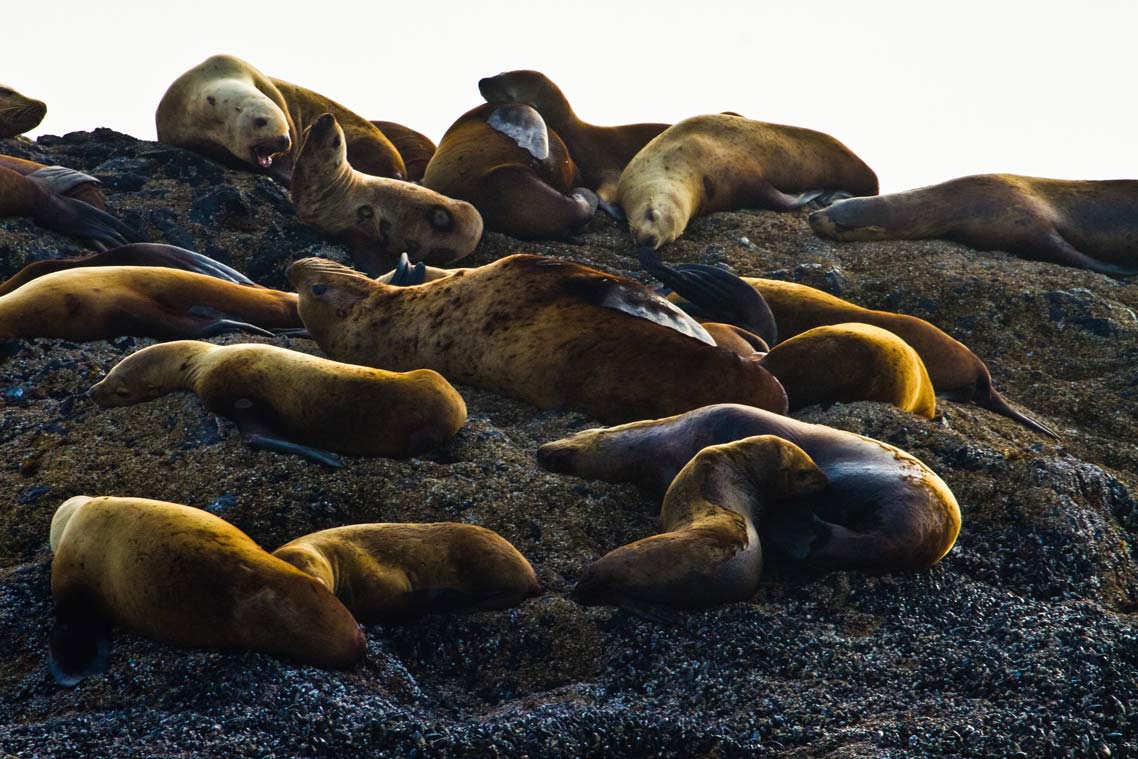
Actions in the water
Parks Canada is doing marine research in many places to protect whales, including British Columbia, Quebec, and Nunavut.
British Columbia
See what it's like to do marine mammal surveys at Gulf Islands National Park Reserve!
Field Notes: Recovering Southern Resident Killer Whales
Text transcript
[Meaghen] My name is Meaghen McCord. I'm a marine ecologist here at Gulf Islands National Park Reserve, on the traditional unceded territory of the Coast Salish Nations.
[Bronwyn] My name is Bronwyn. I'm a marine management officer. Right here I'm putting up our marine research flag that lets other boaters know that we are allowed to research the Southern Resident Killer Whales.
[Meaghen] The first thing we're going to do is head out to Saturna Island Interim Sanctuary Zone. And it's here that we're hoping we might have our first sighting of Southern Resident Killer Whales.
[Bronwyn] Batteries on. Now we're going to make sure that our boat is actually working today.
[Boat motor starts] [Bronwyn] That's a good noise.
[Bronwyn] Just leaving the harbour...
[Meaghen] Here we are right now at the entrance to Active Pass, a component of our transect survey where we stop, look and listen for Southern Resident Killer Whales. While we're doing our surveys, we're also deploying these acoustic hydrophones to monitor the amount of noise that we're hearing in the ocean environment. [Loud boat noises] What you can hear now is the sound of a small vessel with
[Meaghen] This noise actually prevents them from communicating with each other while they're socializing or hunting. So we hope by recording some of the vessel traffic and really better understanding the types of noise that we have here in the Southern Salish Sea that we'll be able to identify potential areas as no-go zones. So, areas where boats are not allowed, where whales can hunt and socialize as we know they love to do
[Bronwyn] We’ve got some pinnipeds off to the left side there.
[Bronwyn] We're going to be doing some visual surveys of Pinnipeds like harbor seal and sea lion. and these photographs are going to be shared with our partners, such as Fisheries and Oceans Canada, as part of a multi-agency approach to monitor species within the Southern Resident Killer Whale habitat.
[Meaghen] We’re trying to find a good location here at the Java Islets where Wynnie can hop off and see if she can find some harbor seal poo. One of the most important things to remember when you're working with pinniped or seal or sea lion poop, is that it's really smelly. So bringing your trusty gloves along is really important.
[Bronwyn] So we're here on the Java Islets and I am on the hunt for scat. One of the more glamorous sides of biology is we often will look for fecal residue from various animals that we are studying in order to get a better understanding of their diet, the population dynamics. And it just gives us a better sense of how Pinnipeds are interacting with their environment...
[Bronwyn] ...what their populations look like and what they're eating, which is very important as they are a large part of the food web within the Southern Resident Killer Whale habitat. All right. So sometimes science doesn't always work out. We've done our initial survey and I can't seem to find anything that is really going to be useful for testing for the variables that I mentioned earlier. So I think it's time to get back on the boat.
[Meaghen] We are about to deploy our baited remote underwater video system, which is comprised of two cameras and this really wonderful canister, really, that we're going to fill with our kilogram of herring. What we're hoping to do here is to deploy the B.R.U.V. and monitor the types of fish that are using the kelp forests of the protected waters in the Park Reserve.
[Meaghen] So our study here today is really aimed at understanding this complex environment that the Southern Resident Killer Whales call home and hoping to document the species that occur here and create this long lasting archive of the incredible fish that call the Pacific Northwest and the waters of Parks Canada and Gulf Islands National Park Reserve home.
The marine ecology team in Pacific Rim National Park Reserve carries out marine mammal surveys onboard a boat called the K'aka'win — the Nuu-chah-nulth word for ‘Killer Whale’. The team:
- records underwater sounds to identify whales, dolphins, and porpoises by their unique calls
- documents sightings of Southern Resident Killer Whales using visual surveys and photography
- documents the number and location of Southern Resident Killer Whales that are present during the year
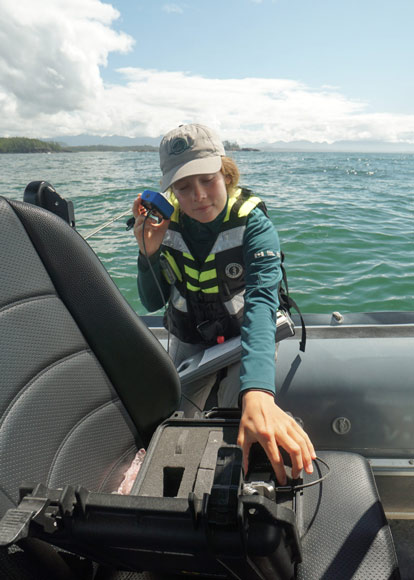
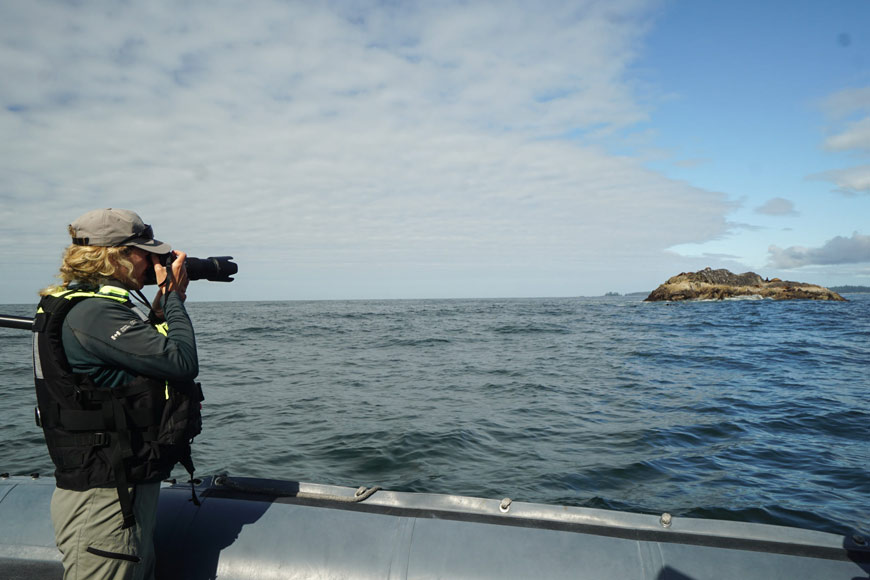
This information helps Parks Canada identify important areas that the whales use to rest, socialize, and to eat. We also use it to inform protection measures that help Southern Resident Killer Whales. These include slow-down and distance measures as well as no-go zones for boaters. Parks Canada also leads education programs to inform boaters about these rules.
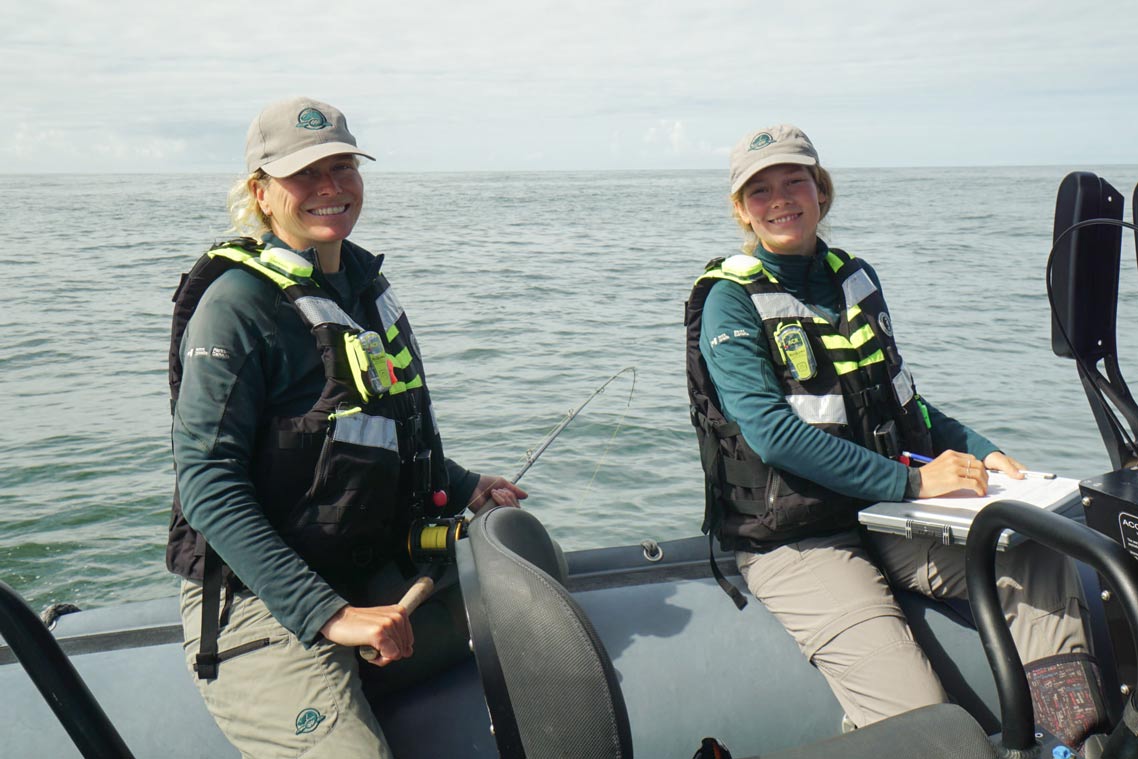
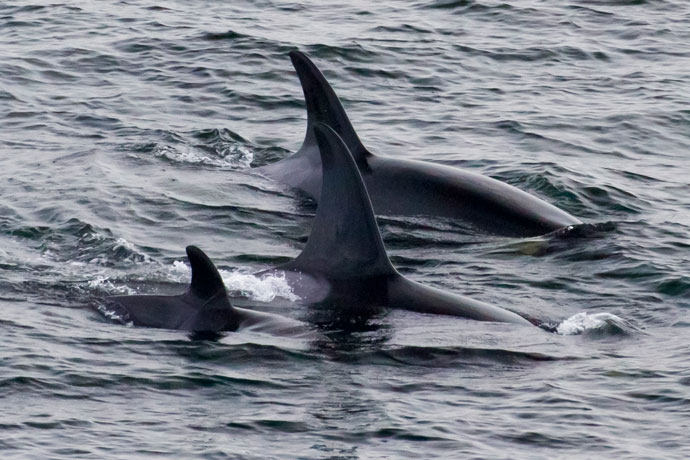
Quebec
The conservation team at the Saguenay—St. Lawrence Marine Park, in Quebec, studies whales from the shore, and on-board their research boat. Parks Canada works closely with Sépaq, partners, and coastal communities to keep ecosystems calm and healthy for the whales.
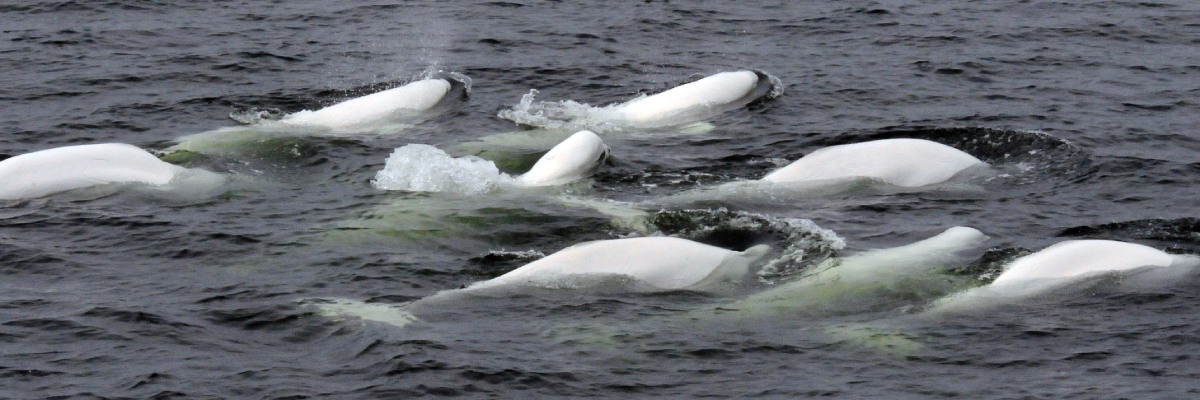
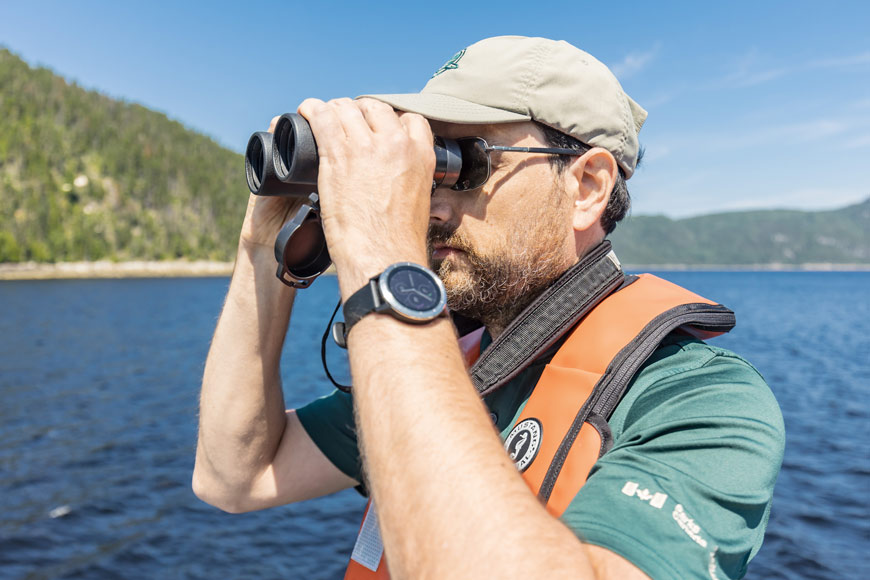
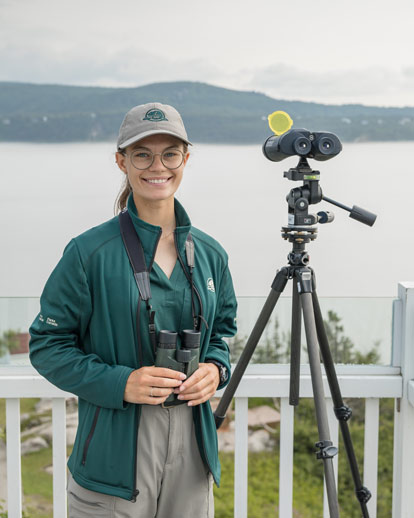
Using mainly visual observations and hydroacoustic monitoring, staff work to:
- better understand the distribution patterns of each species present in the Marine Park
- identify and estimate the abundance of the main prey species (krill, capelin, sand lance)
- describe and count boat types and activities, and characterize interactions with marine mammals inside the Marine Park
Watch this video about efforts to protect the St. Lawrence Estuary Beluga and their habitat
Text transcript
Parks Canada beaver logo
[Aerial view of the Alliance research boat leaving the Tadoussac Marina.]
[Host speaks directly into the camera with the research boat docked behind her.]
[The Resource Conservation team is preparing the boat for a day of research on the water.]
[Name Tag] Sarah Duquette, Resource Management Officer, Saguenay–St. Lawrence Marine Park
[Name Tag] Research Team, Saguenay–St. Lawrence Marine Park
Good morning, here is the Tadoussac Marina.
We have a really beautiful day!
The sea conditions are ideal, there is no wind, so it's perfect for operations in the upper estuary.
[Beluga whales are swimming together in the water.]
[Text] The Saguenay–St. Lawrence Marine Park is in the heart of critical habitat for at-risk St. Lawrence Estuary Belugas.
An aerial view of the Saguenay River coastline.
[Text] Parks Canada and Sépaq work closely with several partners and coastal communities to protect the belugas.
[Sarah prepares a smaller Zodiac boat that will accompany the Alliance on the research expedition.]
So today on the Alliance, it’s a big day.
[There are many people on board, so we will accompany them.]
In fact, we're going to join them using our Zodiac, the Uapameku.
[Name Tag] Chloé Chartrand, Resource Management Officer, Saguenay–St. Lawrence Marine Park
[Title] Studying Habitats to Better Protect Belugas, Saguenay–St. Lawrence Marine Park
[Both boats leave the marina and head to the research location.]
Today, the work will be carried out in a really particular sector, the upper estuary, which is a very important sector, especially for belugas.
[A map of Saguenay–St. Lawrence Marine Park appears and a dotted outline shows the location of the upper estuary in the St. Lawrence River, south of the Saguenay River mouth.]
[Belugas swim in the distance and a close-up image of a beluga whale appears, giving a closer look at the whales.]
[Text] The upper estuary is a critical habitat for St. Lawrence Belugas. Females use it as a nursery to birth and care for their young.
[A Parks Canada scientist uses binoculars to study the coastline in the Saguenay River.]
[Text] In the Marine Park, Parks Canada scientists and their partners study things like food availability, underwater noise, contamination levels, and the presence of aquatic invasive species.
[The Alliance research boat floats in the distance. Sarah, the host, approaches the Alliance with the Zodiac.]
Our research vessel, the Alliance, is about to arrive, so, we’ll wait here in this enchanting environment.
[Name Tag] Samuel Turgeon, Resource Conservation Manager, Saguenay–St. Lawrence Marine Park
[Name Tag] Eliza-Jane Morin, Resource Management Officer, Saguenay–St. Lawrence Marine Park
[Name Tag] Simon Bouchard, Alliance Captain, Saguenay–St. Lawrence Marine Park
[Simon tosses a rope to Sarah so they can tether the two boats together.]
So, we just joined the Alliance in the middle of the river, in the upper estuary.
We will come on board, or even a little closer, to the operations
[Name Tag] Nathalie Simard, Biologist, Marine Aquatic Invasive Species, Fisheries and Oceans Canada
[Name Tag] Nadia Dalili, Resource Management Technician, Saguenay–St. Lawrence Marine Park
Nathalie, a researcher with Fisheries and Oceans Canada, and Nadia work together to collect and test water samples aboard the Alliance.
[Text] The aquatic invasive species project is conducted in collaboration with Fisheries and Oceans Canada.
[A montage shows Parks Canada scientists collecting a variety of water samples and recording the findings.]
This is equipment that measures the physicochemical properties of the water where the net was sent.
So we see information like temperature, salinity, conductivity and the depth.
Parks Canada scientists lower a fine-mesh net into the water to collect a phytoplankton sample.
Aquatic invasive species are species that are not native to the environment.
To measure the presence of these aquatic invasive species, we used a variety of techniques.
[Text] Monitoring indicators like aquatic invasive species helps us track changes to beluga habitat so we can implement measures to minimize their impacts.
[The fine-mesh net has been retrieved from the water and a Parks Canada scientist is spraying the net with a hose. There is a collection bucket at the bottom of the net where the water and samples flow.]
[Eliza will rinse well to make sure that everything flows into the bucket.]
[A Parks Canada scientist pours the phytoplankton sample into a collection container.]
We have a sample of phytoplankton.
Scientists label small sample containers with the date and the location that the samples were collected.
So from this water sample that was collected, we will find DNA particles that can come from secretions, fish scales, and feces from different organisms.
To date, no aquatic invasive species have been found in the marine park.
[The Alliance floats in the blue water with a blue sky above.]
[Text] Climate change and an increase in maritime transport create favorable conditions for aquatic invasive species to establish, meaning it’s essential to continue this monitoring.
[The camera dips below the water and when it emerges, a lighthouse on the coastline of the St. Lawrence River is visible.]
[Text] The knowledge gained through this research and ecological monitoring since the creation of the marine park has made it possible to adapt protection measures for belugas.
[An aerial view of the Saguenay Fjord.]
[Text] See how Parks Canada protects endangered whales: parks.canada.ca/whales
Saguenay–St. Lawrence Marine Park logo
Parks Canada logo
Canada wordmark
This data is used to improve our knowledge about how Belugas and other whales use the Marine Park. As well as to guide the management of the marine protected area. This allowed us to establish protection measures, like the temporary navigation closure area in a bay that is highly used by Beluga mother-calf pairs, and to establish a commercial excursion-free section. The shipping industry has also agreed to voluntarily reduce ship speeds in whale feeding grounds to reduce the risk of collisions.
Photo: Jocelyn Praud
Measures to reduce speeds also help restore the tranquility of the Beluga’s habitat. Marine Park staff use a Marine Spatial Planning approach to conserve and restore the marine soundscape. This provides quiet areas for Beluga Whales. The team has also collaborated to create an online training for mariners and boaters on respecting the whales and the regulations in force.
Find out other ways that Parks Canada is helping humans to better live with Beluga whales.
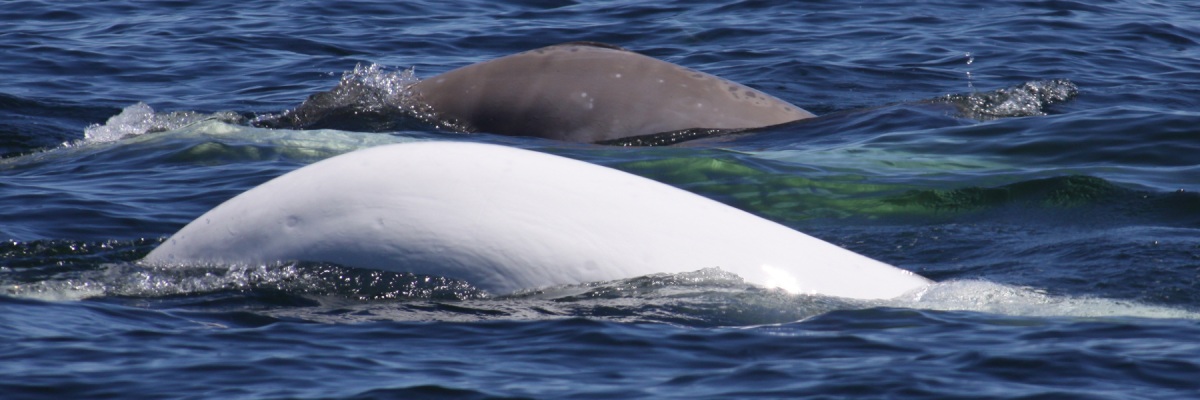
Nunavut
Parks Canada and partners are researching the effects of underwater noise on whales at Tallurutiup Imanga National Marine Conservation Area in Nunavut. Parks Canada uses Inuit traditional knowledge to help inform this study by working with partners like the Qikiqtani Inuit Association’s Nauttiqsuqtiit Inuit Stewards. Using underwater microphones, they track the source and characteristics of underwater noise, including noise from ships, to determine how underwater noise may affect marine life.
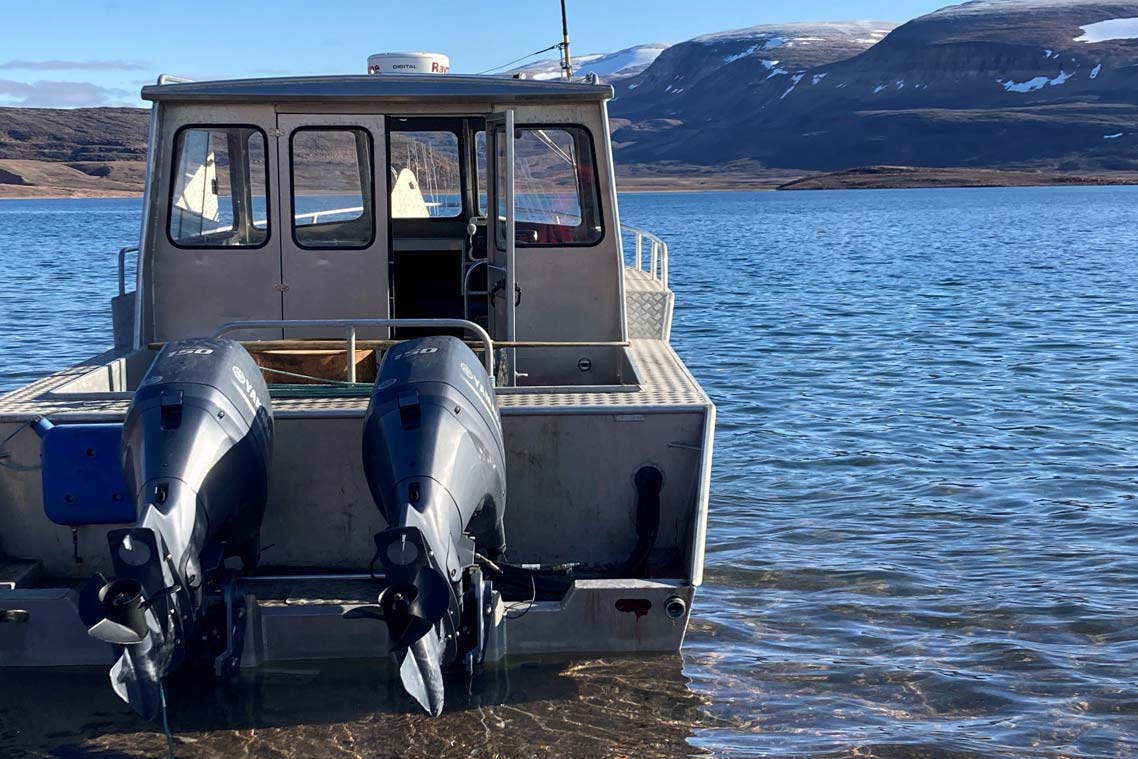
Photo: Clare Kines
Up to 75% of the global population of Narwhal use Tallurutiup Imanga NMCA as a migration corridor and summering area. Narwhals are known to be sensitive to increasing levels of underwater noise.
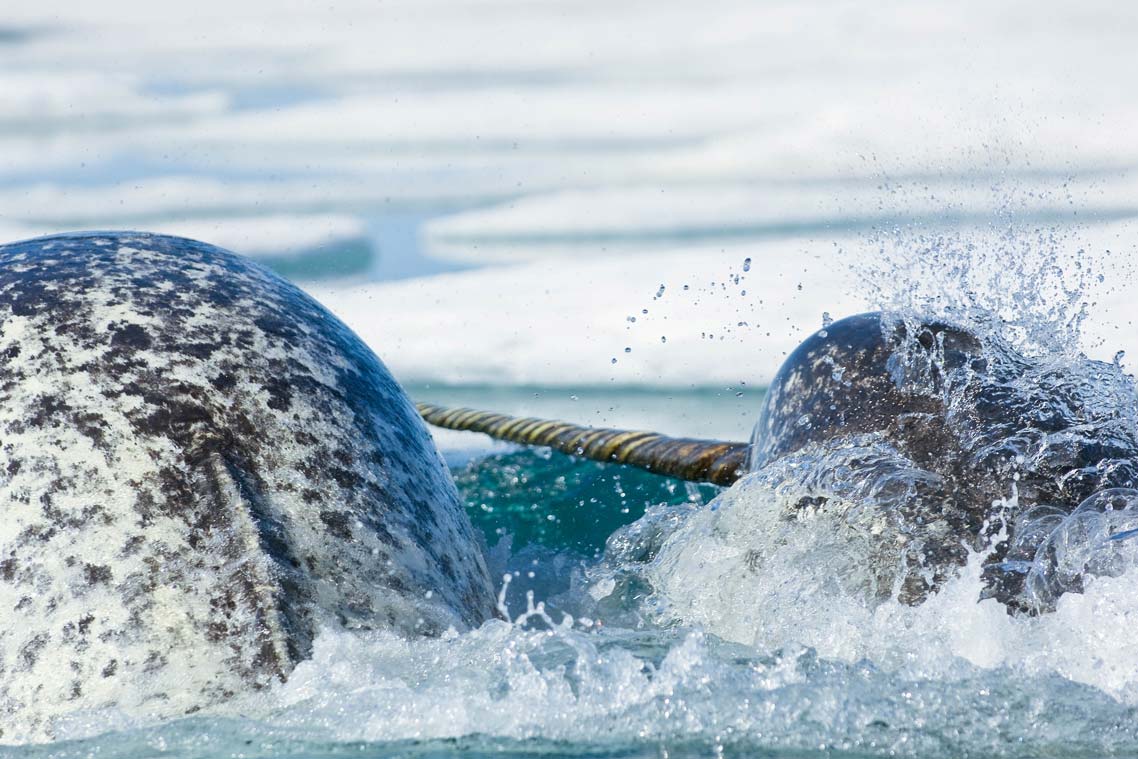
Watch the deployment of an underwater hydrophone by Clare Kines, Parks Canada staff near Arctic Bay, Nunavut
Text transcript
[ This video contains no sound ]
A person standing in a boat traveling on the water steadies himself as he pushes a bolder that is tied to a buoy and a hydrophone over the side of the boat. The bolder, the hydrophone, and the buoy fall overboard one by one as the boat travels away.
How you can help protect whales
Protected waters managed by Parks Canada are special places where whales can often be spotted right from the shore. Explore over 100 sites listed on The Whale Trail to learn more about shore-based whale watching!
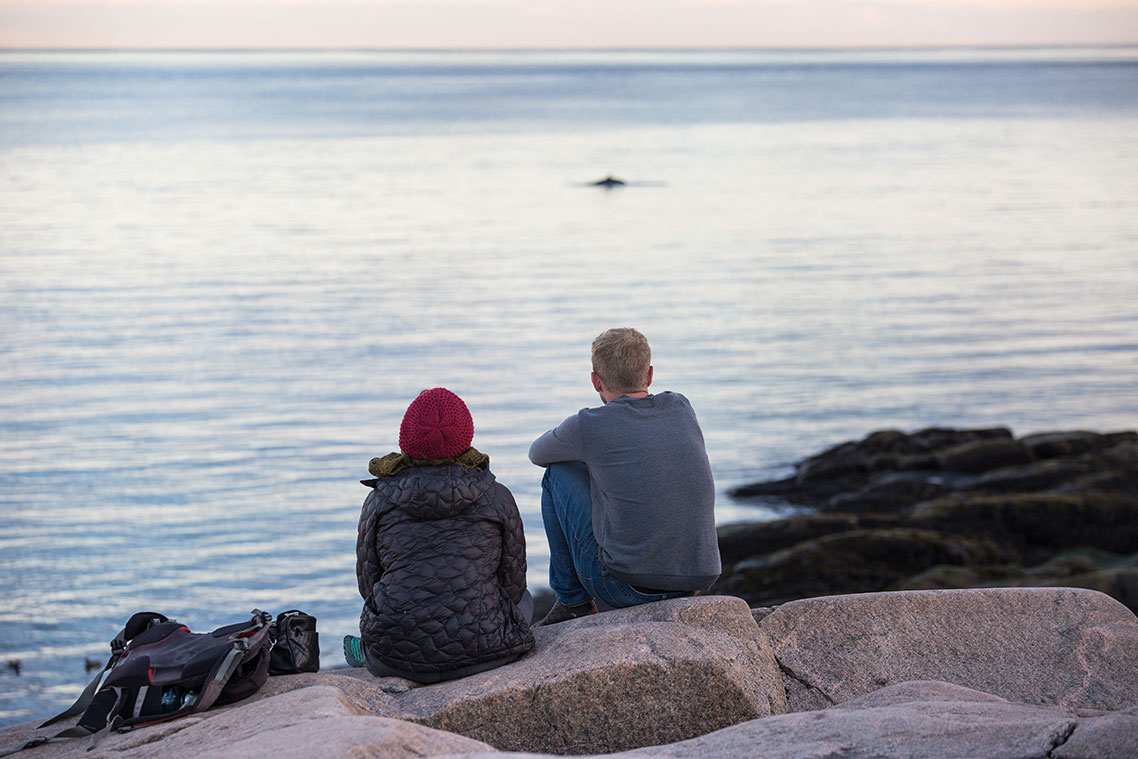
You can also protect whales from home by:
- eating sustainable seafood, especially salmon, using guidelines like Ocean Wise
- using environmentally-friendly products to reduce ocean contamination
- taking part in a shoreline clean-up to help ensure our oceans are plastic free
- learning how to navigate in whale habitat
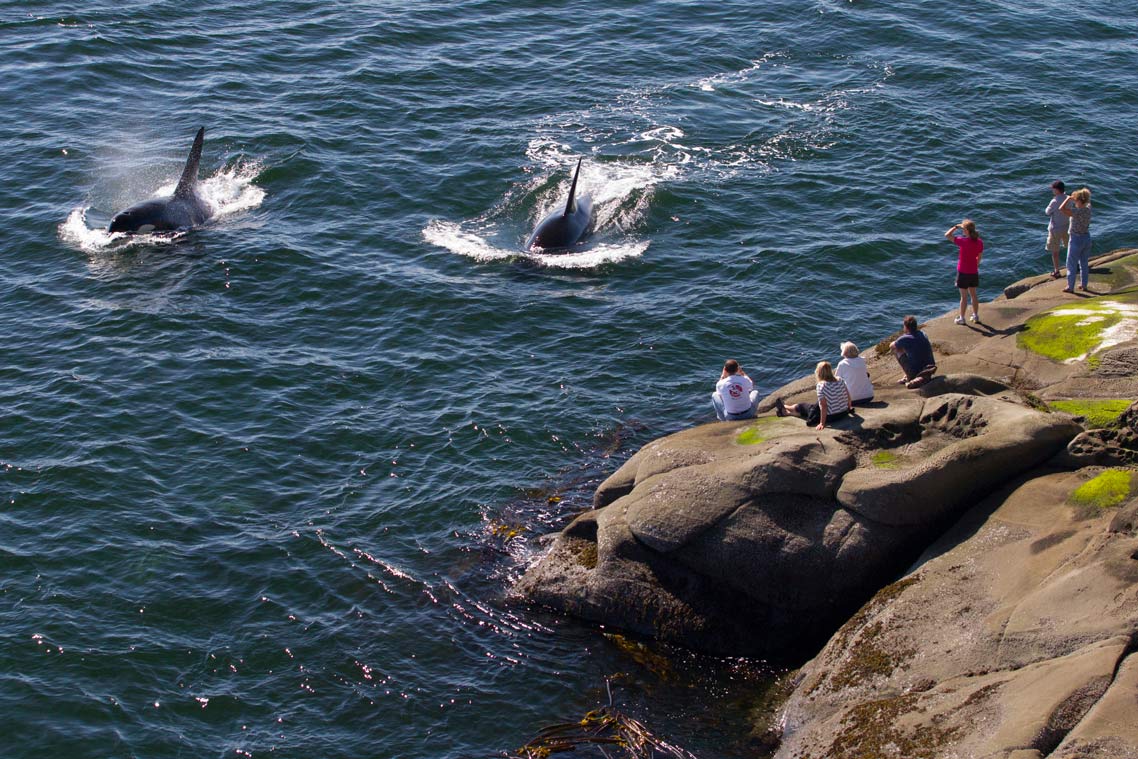
When viewing whales from a boat, it is important to follow local Marine Regulations. This can include keeping a distance of at least 400 m from whales, reducing speeds, and avoiding closed areas.
- Date modified :